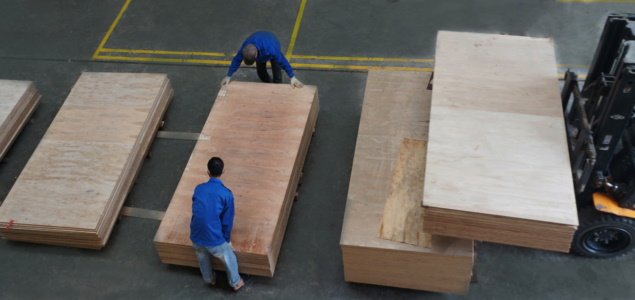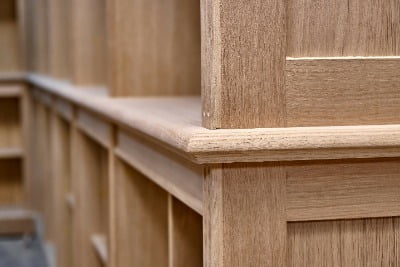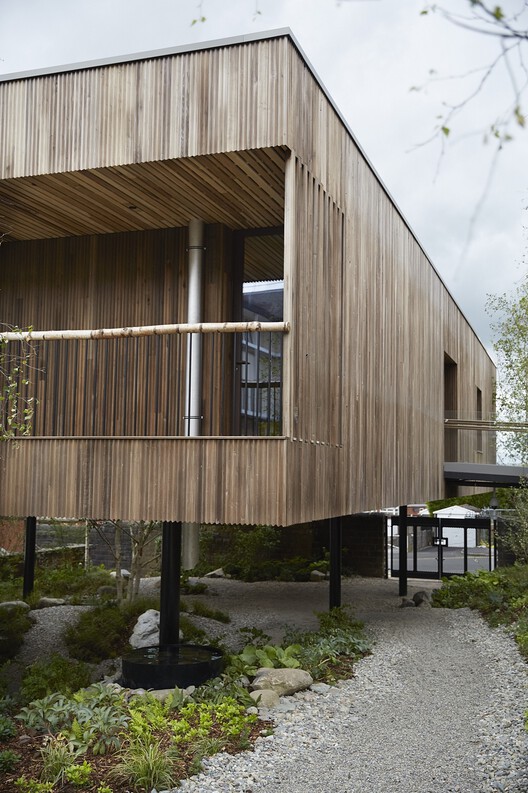Gia Lai used to be known as the “giant of the wood industry” with many names such as Hoang Anh Gia Lai, Duc Long Gia Lai… However, in recent years, the consumption market has been difficult, the situation of inflation has increased. especially the strict regulations for the EU market have caused many wood processing and manufacturing enterprises in Gia Lai to be affected, forcing them to cut workers or close factories. Facing that situation, Gia Lai has been planning a clear strategy for the wood processing industry to stand firm.
Take advantage
Gia Lai province currently has nearly 300 wood processing and production establishments, mainly on a small scale. Most of these establishments operate sawing and sawing raw wood, chopping wood chips to supply units outside the province for processing and export. With a raw material area of over 150,000 hectares of planted forest and nearly 90 thousand hectares of rubber, Gia Lai is considered a major source of raw materials for wood production and processing partners.
In particular, from December 2020, according to new EU regulations, enterprises exporting agricultural and forestry products will have to prove the origin of goods; Agro-forestry products related to forest land will also no longer have the opportunity to enter the EU market. With many advantages to develop the wood processing industry and the new EU regulations have opened up opportunities for the wood processing industry in Gia Lai.
Mr. Phan Dinh Ke – Director of Minh Duong Kon Tum Co., Ltd (Dien Phu Industrial Park, Pleiku City) shared: “Now we have built a source of raw materials of clear origin, mainly high wood. rubber of the 15th Army Corps and the Rubber Corporation… This is the premise for survival with the current woodworking industry”.
Besides the self-reliance of wood production enterprises, Gia Lai province has also planned a strategy to develop the local wood industry; In which, the province is focusing on creating a legal framework to ensure the legality of Vietnamese wood products exported to the European market under the Voluntary Partnership Agreement on Forest Law Enforcement, Forest Governance and Trade. forest product trade.
Notably, Gia Lai has implemented the Project on Development of a sustainable and effective wood processing industry in the 2021-2030 period. Accordingly, limiting the exploitation of young forests, conducting large timber forest business to protect the ecological environment, create a large source of wood materials, and improve the efficiency of plantation business.
In parallel with the development of a project dedicated to the sustainable wood processing industry, Gia Lai province also allocates local budget capital for activities to support production afforestation, and issue forest certification in accordance with regulations on forest management. investing in forest protection and development, encouraging enterprises to invest in agriculture and rural areas. Along with that is a solution to ensure that all wood products exported in the area to the European Union are legally produced and sourced, in line with the commitment to sustainable forest management.
Mr. Pham Van Binh – Director of the Department of Industry and Trade said that Gia Lai province has regulations for wood pellet production projects that must ensure the origin of forest products, such as proving planted forests or suppliers to ensure ensuring compliance with commitments… Deploying models of association and cooperation in afforestation and forest development between wood production and processing enterprises and households has created conditions for stabilizing life and increasing incomes; at the same time, supporting enterprises to proactively source quality raw materials for production and processing. This is a great advantage to develop a sustainable forestry economy, enhance livelihoods, and increase the rate of forest cover.
Efforts to overcome difficulties
Although at present, the wood production industry in Gia Lai is facing many difficulties, many businesses operating in this field are experiencing a series of crisis in the consumption market. According to data from the Department of Industry and Trade, the export value of refined wood products in the area has begun to decline for about 3 years now. If in 2019 it reaches 7 million USD, in 2020 it reaches 7.5 million USD, it will only reach 4.3 million USD in 2021, only 3.5 million USD in 2022, and 192,000 USD in the first 4 months of 2023.
To overcome difficulties and revive the wood processing industry, Gia Lai province has identified a clear and specific strategy for the development of the wood industry; in which, to focus on developing the wood processing industry in the direction of increasing added value and sustainable development in terms of economy, society and environment; improve production capacity towards modernity, productivity and high quality.
The province encourages enterprises to process wood and wood products to participate in developing markets inside and outside the province, aiming for stable and sustainable export; directly participate in large timber afforestation, be proactive in the supply of raw materials, form linkages and supply chain networks between enterprises, processing facilities and afforestation households; ensure that timber and wood products produced, processed and exported are sourced from legally planted forest timber, certified for sustainability (FSC), certified for chain of custody (CoC), certified for forest management sustainable, for forest growers and harvesters (FM), certified timber under control, for forest management units or producers, processors, and traders of standard timber sources (CW) …
Once the development strategy of the timber industry has been planned, Gia Lai province has also identified the objectives to be implemented; in which, to focus on protecting and developing the entire existing forest area; increase the forest coverage rate to 47.75% by 2025, 49.2% by 2030 (including industrial woody plants and multi-purpose plants).
At the same time, the province effectively implemented the plan to plant trees in the area according to the approved project “planting 1 billion trees”; ensure the average afforestation area per year reaches 8,000 ha, meeting the demand for wood materials for the production and processing industry. For the period of 2021-2025, 40,000 ha will be planted (protection 1,033 ha, production 38,967 ha); of which at least 10,000 ha of large timber forests, 15,000 ha of small timber forests will be converted into large timber forests.
The production of timber from planted forests reaches over 1 million m3, an average of 150,000 m3-300 thousand m3/year. Forest area certified for sustainable forest management is 30,000 ha. Processing capacity reaches 450 thousand m3/year; in which, the production of artificial boards is 200,000 m3/year, domestic furniture reaches 150,000 m3 of products, and export furniture reaches 100,000 m3 of products. The growth rate of forestry production value by 2025 will reach 10.91%.
In addition, the hi-tech applied forestry park was established and effectively put into operation as the nucleus for the development of hi-tech applied forestry production; strive for land allocation, forest allocation, and lease of forest land to reach at least 60% of the forest area and forest land currently managed by the commune-level People’s Committees. Since then, contributing to creating jobs and increasing people’s incomes, by 2025, the income value of forest people will increase 2 times per unit area compared to 2020.
In the period 2026-2030, the province will continue to plant new forests and plant 40,000 ha of rotational forests; in which, at least 15,000 ha of large timber forest, continuing to convert 15,000 ha of small timber forest into large timber forest. Timber production is over 1.8 million m3, an average of 250-400 thousand m3/year; issue a certificate of sustainable forest management for an additional 50,000 ha. Processing capacity reaches 750 thousand m3/year; in which, the production of artificial boards reached 350,000 m3 per year, domestic furniture reached 250,000 m3 of products, and exported furniture reached 150,000 m3 of products.
The province has increased land allocation, forest allocation, forest land lease to communities, households, individuals and organizations to manage, protect and develop forests, reaching 100% of the forest area and forestry land allocated by the People’s Committee. currently managed by commune people; increase income for forest people, by 2030, income of forest people will increase by 2-3 times per unit area compared to 2020.





